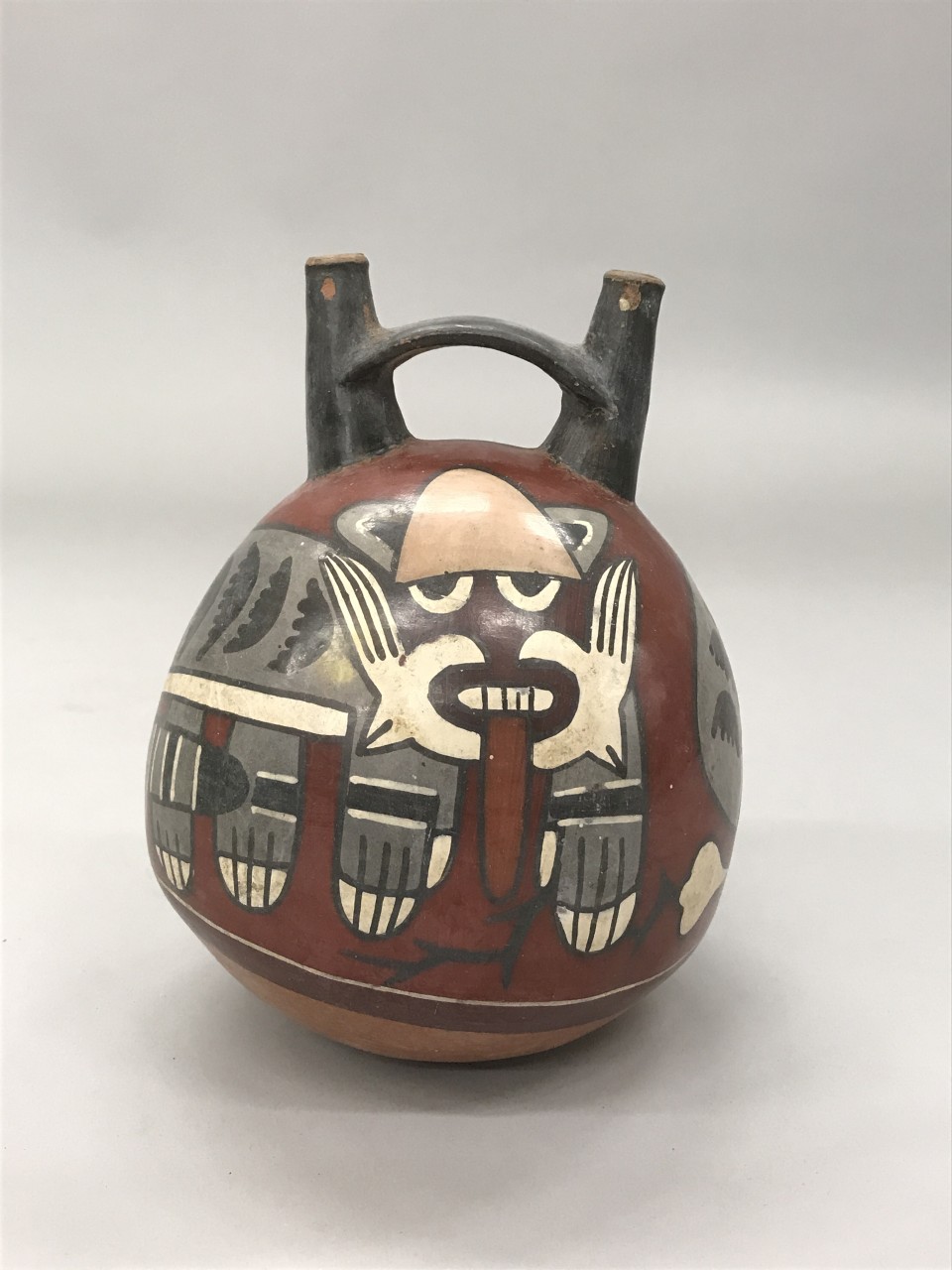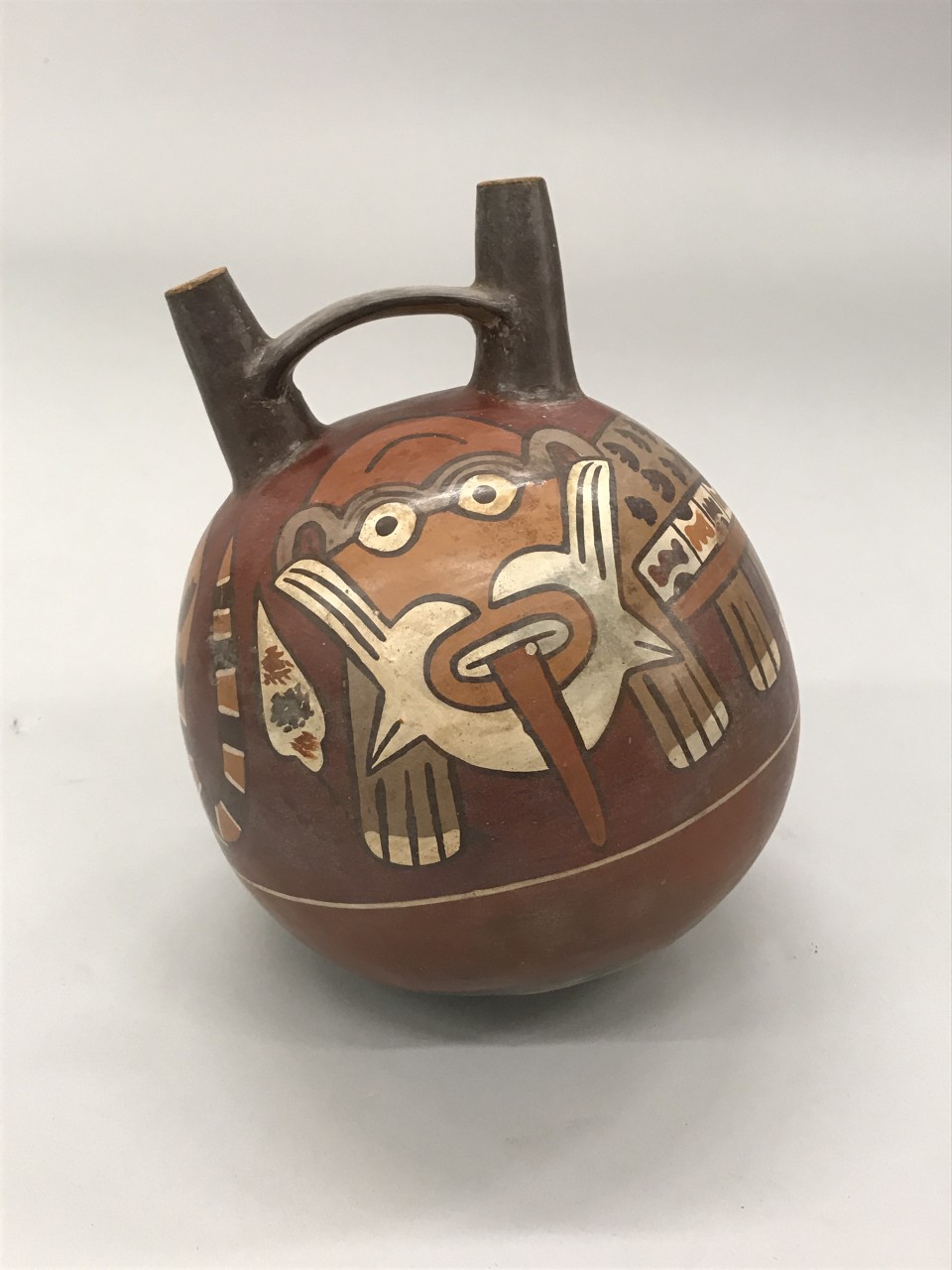Fired Felines of the Ancient Americas: Maya & Nazca Ceramics
 |
|
Collage of a Rattle in the Form of a Jaguar Embracing a Man and Double Spout & Bridge Vessels |
Among the many animals associated with Halloween, cats are perhaps most widely linked around the world with the supernatural and uncanny. Though the cute, affectionate pet cats we have come to know and embrace in our homes today are far removed from such connotations, Halloween is a reminder of the hold felines once had upon the ancient world. In the spirit of the season, this post highlights ceramics in Bowers’ permanent collection from the Ancient Americas that portray the domestic cat’s ancestral feline kin.
 |
|
Rattle in the Form of a Jaguar Embracing a Man |
Meowsteries of the Afterlife
Located just off the northwest coast of Campeche City in Mexico, the small, low-lying island of Jaina is home to vast burial grounds richly interred with highly detailed ceramic figurines. Jaina is believed to have served as a necropolis for Maya elites. It contains many tens of thousands of shallow, stratified graves that reflect a funerary tradition of remarkable complexity, well and truly advanced for its time. Though much about Maya funerary customs remains unknown, it is well established that figurines, along with sculptural ceramic whistles and rattles like this exceptional example in the form of a jaguar embracing a man, were interred with adolescents and adults.
Upon closer look, is the jaguar figure embracing or threatening the man? Is it a spirit, a shaman in ceremonial costume, or possibly a mythical Maya being? Despite mysterious meanings, Maya funerary objects clearly reflect a worldview in which boundaries between humans, animals, spirits, and natural realms are interwoven within a permeable cosmological fabric, markedly different from the gentle companionships we share with our pet cats today.
 |
 |
| Double Spout & Bridge Vessel Nazca culture 100 BCE–450 CE South Coast Peru Ceramic and pigment; 8 × 5 in. Loan Courtesy of James Irvine Swinden, L.2020.7.15 |
Double Spout & Bridge Vessel |
Purruvian Pottery
Peru’s fertile coastal river valleys and high mountain basins gave rise to successive cultures that formed one of South America’s most advanced civilizations. Among the fine ceramics to come from this region, the Nazca made polychrome vessels such as the two examples above adorned with stylized spotted felines. With roots in the preceding Paracas style, Nazca ceramics represent an accumulation, as well as a sophistication of techniques and ideas over a roughly 700-year period. Much like the mysterious Maya rattle, double spout and bridge vessels were interred with Nazca elites.
Rendered in the flat, boldly contoured, and vibrant polychrome style characteristic of Nazca ceramics, each vessel is encircled by pampas cats (Felis colocolo), native to Peru’s forests, highlands, and open grasslands (pampas). Based on the distinct missing noses and drooping tongues, which may represent stylized snarls, these double spout and bridge vessels are likely from the early Nazca period (100–450 CE) when naturalistic depictions waned in favor of abstraction for which Nazca designs are globally celebrated today. In later iterations, the drooping tongue is substituted with a piece of fruit as well as with floral and vegetal motifs, lending to its evolving association over time with agricultural abundance.
Just as compelling are the details of the pampas cat’s coat patterns, which not only offer clues into the specific subspecies depicted, but also suggest where the vessels may more closely originate. A common pampas cat with a gray coat with dark stripes, like that seen on the left vessel is known as Felis colocola, native to many environs across coastal Peru and present-day Chile; whereas, a yellow-orange coat with dark tail rings is more typical of Felis munoai, a subspecies endemic to the Uruguayan Savanna ecoregion.
Text and images may be under copyright. Please contact Collection Department for permission to use. References are available on request. Information subject to change upon further research.
Comments